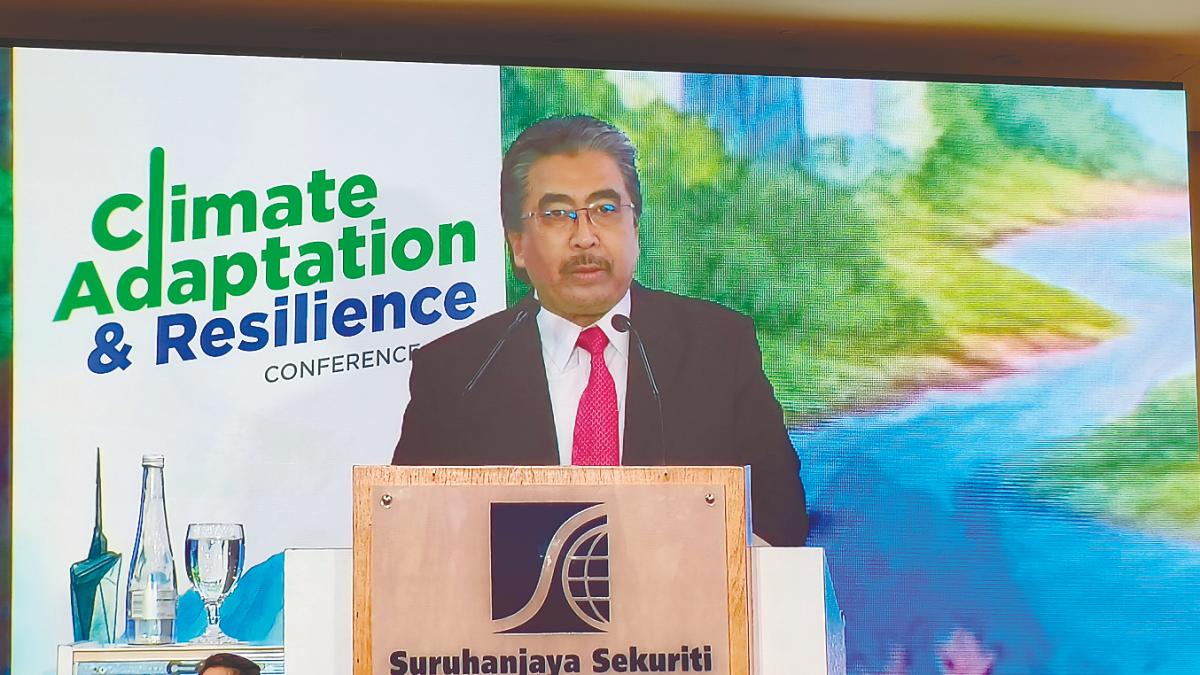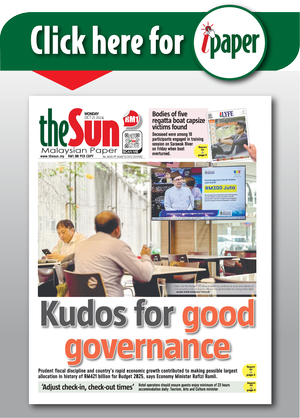KUALA LUMPUR: Malaysia will table the National Climate Change Bill in Parliament in the coming months, providing a legal framework to govern climate action and anchor market-based financing for adaptation and resilience projects.
Acting Natural Resources and Environmental Sustainability Minister Datuk Seri Johari Abdul Ghani said the proposed law will enshrine both mitigation and adaptation measures into statute, creating obligations for reporting, compliance and enforcement similar to existing corporate governance standards.
“This will not only strengthen governance but also spur the development of a domestic carbon market, aligning Malaysia with its net-zero and nationally determined contribution targets,” Johari said in his keynote at the Climate Adaptation and Resilience (A&R) Conference organised by the Securities Commission Malaysia (SC) today.
He said Malaysia must balance international commitments with national circumstances as a developing economy. While mitigation projects such as renewable energy attract investors, he said adaptation projects such as flood defences often struggle for financing because their benefits are localised and long-term.
“We must shift this paradigm by harnessing both public and private financing. Whether through public-private partnerships, green bonds or incentives for companies that build adaptive capacity, the capital market can be a powerful enabler.”
Johari announced that Malaysia’s first comprehensive National Adaptation Plan (MyNAP) will be launched in January 2026. Developed with over 100 stakeholders across government, industry and civil society, MyNAP will outline strategies to address climate risks across health, infrastructure, agriculture, water and biodiversity.
“MyNAP will complement the Climate Change Act, serving as a blueprint to help Malaysia withstand the growing impacts of climate change,” he said.
Johari underscored the urgency of adaptation, pointing to the December 2021 floods that displaced thousands and caused RM6.1 billion in losses, equivalent to 0.4% of gross domestic product. Malaysia also recorded 45 heatwave warnings in 2024, up from just two in 2023.
Should current trends persist, the country could face up to 200 heatwave days annually by 2050, while floods are expected to grow more frequent and severe.
“Despite contributing only 0.69% of global carbon emissions, Malaysia is disproportionately vulnerable to climate risks. Floods, droughts and heatwaves threaten agriculture, fisheries and food security and we must prepare urgently,” Johari warned.
SC chairman Datuk Mohammad Faiz Azmi said the commission aims to catalyse more private capital into adaptation and resilience efforts, with sustainability set as a central pillar of the upcoming Capital Market Masterplan 4.
“Unlike mitigation, many adaptation initiatives struggle to attract financing as their benefits are long-term and not easily monetised. Yet they are essential to protect communities and economic resilience. This can only succeed if we align resources across government, business and society,” he said.
The A&R Conference gathered more than 400 delegates from ministries, financial institutions, academia and NGOs to discuss enabling policies, investment strategies and innovative models for adaptation finance.
As part of its Coastal Flooding Adaptation and Resilience (COFAR) initiative, the SC recently organised the COFAR University Challenge with ICAEW Malaysia, SD Guthrie and SEADPRI-UKM. The programme engaged 220 students from 29 universities to design financially viable flood resilience solutions for Carey Island.
“By embedding revenue-generating models in adaptation projects, we can improve their financial viability and attract investors,” Johari said in welcoming the initiative.
An interactive exhibition, The Rising Waters, accompanied the conference, tracing Malaysia’s flood history and showcasing climate projections to highlight the urgency of new financing approaches.
Johari reaffirmed Malaysia’s global pledges including maintaining at least 50% forest cover (currently at 54%), reducing emissions intensity by 45% by 2030 and cutting methane emissions by 30% by 2030, but stressed that commitments must be achievable.
“We cannot simply pledge figures without ensuring implementation. That is why engagement with industries and states is crucial so that policies are practical and compliance is achievable,” he said.









